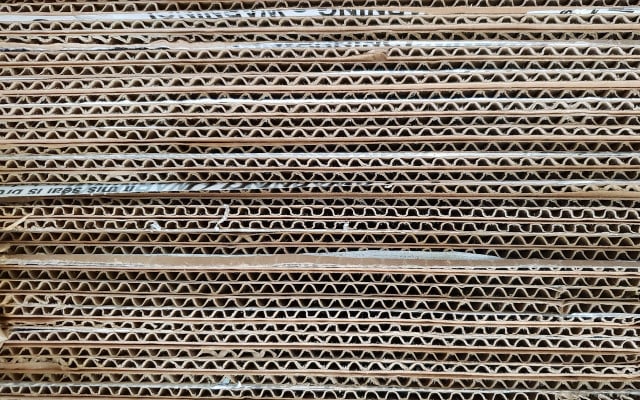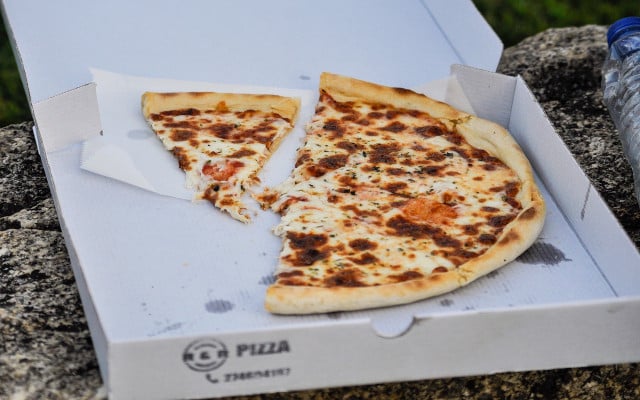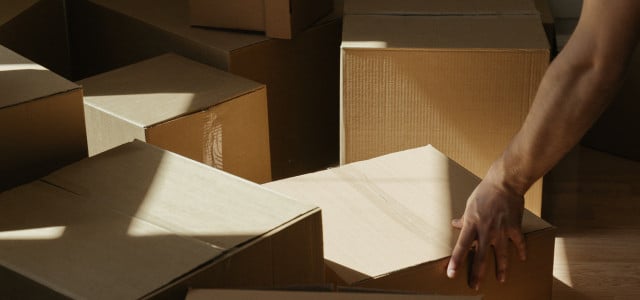Due to the popularity of e-commerce and online shopping, cardboard boxes have become a staple in most homes – but how do you get rid of them? We’ll take a look at cardboard box recycling, how to do it, and why it’s important.
Online shopping has changed the way so many people purchase their everyday items. On one hand, it’s fantastic because you’re able to get items you never had the chance to purchase before. On the other hand, the amount of packaging can be quite excessive. If you’ve ever ordered something online, you know what we’re talking about.
Cardboard boxes are a much better alternative to plastic bubble wrap envelopes and other non-recyclable materials, but it’s important to recycle cardboard boxes the right way. If not disposed of properly, cardboard can be a very resource-intensive material.
Different Types of Cardboard

Cardboard is a general term used to describe paper-based products designed to be more substantial and sturdy in nature. It can be folded, maintain shape, and support weight far better than other paper products. There are two main types of cardboard used in packaging:
- Corrugated Cardboard: Most shipping boxes are made using corrugated cardboard which is characterized by its sturdy three layer system (seen above).
- Paper Board: Most product packaging is made out paper board which is similar in rigidity and thickness to card stock.
Cardboard is actually designed to be recycled, and the majority of municipal recycling programs across the US will accept any paper-based product in their curbside pickup service.
Cardboard Box Recycling: Here’s What To Do
Recycling cardboard boxes is really easy and doesn’t require much effort, especially if you live in an area with a curbside recycling program. If you don’t, you can look up where your nearest recycling center is using Waste Management’s drop-off locator.
- Remove any packaging from inside the box. Things like bubble wrap, packaging peanuts, plastic air cushions, and styrofoam should all be removed.
- Take a knife or scissors and cut through the tape so you can break the box down and flatten it. This not only saves space in your home, it also saves space in the recycling truck.
- For very large boxes, you may need to fold it several times, or cut it into smaller pieces in order to help keep the bulk down.
- You don’t need to remove tape, labels, or staples if you don’t want to, because this is done at the recycling facility. Ink is also removed during the recycling process.
Importance of Recycling
Ninety percent of all products shipped in the USA are sent in corrugated cardboard boxes. According to the American Forest & Paper Association, 88.8 percent of all cardboard was recycled in 2020. This is promising because it means people are beginning to realize the importance of recycling their cardboard boxes, which is a great thing for our planet. When cardboard goes to the landfill, it releases methane (a greenhouse gas) into the atmosphere as it breaks down. Because cardboard is one of the easiest materials to recycle, it makes no sense to send it to the landfill.
Manufacturing virgin cardboard is a resource-intensive process that requires a lot of energy; it takes 3 tons of trees to make 1 ton of virgin cardboard. By recycling that same ton of cardboard, it can save about 46 gallons of oil, 9 cubic yards of landfill space, 17 trees, and 7000 gallons of water.
Cardboard Box Recycling Tips



There are certain times when cardboard cannot be recycled, so it’s good to keep these things in mind:
- Wet cardboard cannot be recycled. If you’re placing it out at the curb for pick up, make sure to keep it inside if it’s raining, or cover it up.
- Greasy cardboard like pizza or donut boxes, can also not be recycled. Paper doesn’t get heated during the recycling process, so the oil and grease remain in the pulp and can end up ruining whole batches. If only part of the box is greasy, cut it out and add it to your compost, then recycle the clean cardboard.
- Oil or chemical stained cardboard also doesn’t belong in the recycling bin, for the same reason as greasy and wet cardboard. Chemically stained paper products belong in the trash.
Alternatively, there are many ways you can reuse cardboard boxes to keep them out of recycling:
- Use them as gift boxes when giving presents to friends and family.
- Keep them to use for storage.
- Make use of them during arts and crafts.
- Protect floors when moving large items of furniture by laying down cardboard boxes.
Do you like this post?







